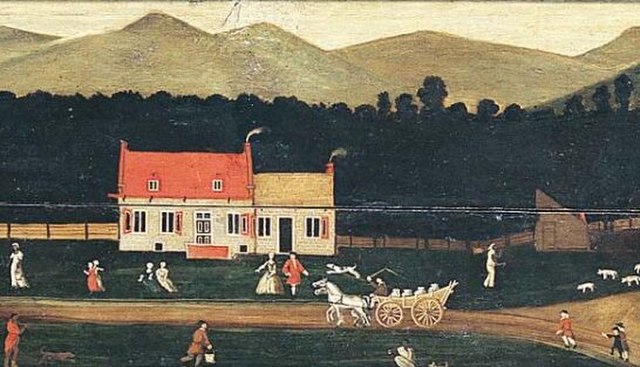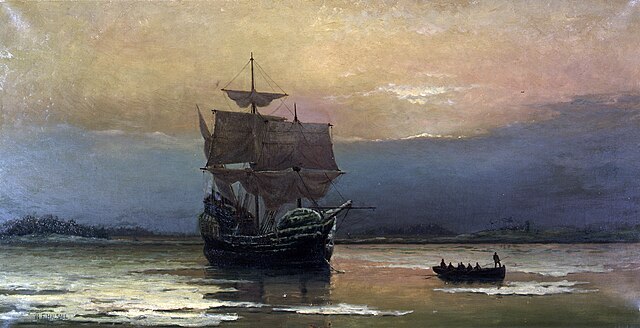Dutch Americans are Americans of Dutch and Flemish descent whose ancestors came from the Low Countries in the distant past, or from the Netherlands as from 1830 when the Flemish became independent from the United Kingdom of the Netherlands by creating the Kingdom of Belgium. Dutch settlement in the Americas started in 1613 with New Amsterdam, which was exchanged with the English for Suriname at the Treaty of Breda (1667) and renamed New York City. The English split the Dutch colony of New Netherland into two pieces and named them New York and New Jersey. Further waves of immigration occurred in the 19th and 20th centuries.
Self-reported (partial) Dutch ancestry (2021)
The Van Bergen farm, 1733, near Albany, New York—distinctively Dutch
Typical Dutch homestead in Northeast Wisconsin, circa 1855
Martin Van Buren circa 1855. He was the first U.S President without any British ancestry as he was of entire Dutch descent.
New Amsterdam was a 17th-century Dutch settlement established at the southern tip of Manhattan Island that served as the seat of the colonial government in New Netherland. The initial trading factory gave rise to the settlement around Fort Amsterdam. The fort was situated on the strategic southern tip of the island of Manhattan and was meant to defend the fur trade operations of the Dutch West India Company in the North River. In 1624, it became a provincial extension of the Dutch Republic and was designated as the capital of the province in 1625. New Amsterdam became a city when it received municipal rights on February 2, 1653.
View of New Amsterdam
The Rigging House, 120 William Street, in 1846. It was a Methodist church in the 1760s, then a secular building again before its demolition in the mid-19th century.
1882 depiction of the ship Mayflower sailing from England to America in 1620, in Plymouth Harbor
1626 letter in Dutch by Pieter Schaghen stating the purchase of Manhattan for 60 gulden.








